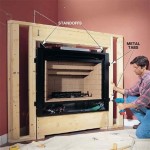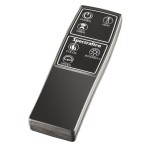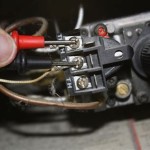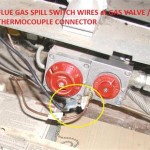```html
Mobile Home Fireplace Inserts: A Comprehensive Guide
Mobile homes present unique challenges when considering heating solutions. Space limitations, construction materials, and ventilation requirements necessitate carefully choosing heating appliances. Fireplace inserts offer a potential solution, providing supplemental heat and a visual focal point. However, selecting and installing a fireplace insert in a mobile home requires a thorough understanding of safety regulations, installation procedures, and the specific requirements for mobile home applications.
This article provides a comprehensive guide to mobile home fireplace inserts, covering essential aspects such as types of inserts, safety considerations, installation procedures, and maintenance requirements. It emphasizes compliance with relevant codes and standards to ensure safe and efficient operation.
Understanding the Specific Requirements for Mobile Homes
Mobile homes differ significantly from traditional site-built houses in their construction and ventilation. These differences directly impact the selection and installation of heating appliances, including fireplace inserts. The primary concern is the reduced airspace and tighter construction, which necessitate careful attention to combustion air and venting requirements.
Mobile homes often have less insulation than standard homes, leading to faster heat loss. This means a fireplace insert might need to be appropriately sized to compensate for this heat loss and effectively warm the living space. A larger unit than necessary can lead to overheating and discomfort, while a smaller unit may not provide sufficient heat.
Furthermore, the lightweight construction of mobile homes requires careful consideration of the added weight of a fireplace insert. Reinforcing the floor structure may be necessary to support the insert and prevent structural damage. Consulting with a qualified structural engineer or contractor is recommended to assess the load-bearing capacity of the floor.
Finally, mobile homes are subject to specific HUD (Housing and Urban Development) regulations. Any heating appliance installed in a mobile home must be specifically approved for mobile home use and must comply with all applicable HUD standards. Failure to comply with these regulations can result in serious safety hazards and potential legal repercussions.
Types of Fireplace Inserts Suitable for Mobile Homes
Several types of fireplace inserts are potentially suitable for mobile homes, but each has its own advantages and disadvantages. The most common types include electric, propane, and direct-vent gas inserts. Wood-burning inserts are generally not recommended for mobile homes due to the stricter venting requirements and increased risk of fire.
Electric Fireplace Inserts: These are the simplest to install, requiring only a standard electrical outlet. They don't produce real flames, but instead use electric heating elements to generate heat and simulate a flame effect. They are relatively inexpensive and don't require venting, making them a popular choice for mobile homes with limited space or those where venting is difficult or impossible. However, electric inserts typically provide less heat than gas or propane models and may not be sufficient for heating larger areas.
Propane Fireplace Inserts: These inserts burn propane gas to produce real flames, providing a more authentic fireplace experience and generating more heat than electric models. They require a propane supply line and venting to the outside. Direct-vent propane inserts are the preferred option for mobile homes, as they draw combustion air from outside and vent exhaust gasses directly to the outside, minimizing the risk of indoor air pollution. Professional installation is highly recommended for propane inserts to ensure proper connection to the propane supply and safe venting.
Direct-Vent Gas Fireplace Inserts: Similar to propane inserts, direct-vent gas inserts burn natural gas to produce flames and heat. They also draw combustion air and vent exhaust gases directly to the outside. The primary difference is the fuel source – natural gas instead of propane. Like propane inserts, professional installation is necessary to ensure safe and compliant operation. The availability of a natural gas line is a prerequisite for considering this type of insert.
When choosing between these options, factors such as heating requirements, budget, fuel availability, and venting possibilities should be considered. Consulting with a qualified HVAC technician or fireplace specialist can help in making the best selection for the specific mobile home and its heating needs.
Safety Considerations and Installation Procedures
Safety is paramount when installing a fireplace insert in a mobile home. Adherence to all applicable codes and regulations is crucial to prevent fire hazards, carbon monoxide poisoning, and other potential dangers. The following safety considerations and installation procedures are essential:
Mobile Home Approval: The fireplace insert must be specifically approved for use in mobile homes. Look for a UL listing or other certification indicating compliance with mobile home standards. This approval ensures that the insert has been tested and meets the safety requirements for mobile home applications.
Venting: Proper venting is critical for gas and propane inserts. Direct-vent inserts are the safest option for mobile homes, as they draw combustion air and vent exhaust gases directly to the outside. Ensure that the venting system is installed according to the manufacturer's instructions and complies with all applicable codes. Incorrect venting can lead to carbon monoxide buildup, which is a potentially lethal hazard.
Combustion Air: Adequate combustion air is essential for proper operation of gas and propane inserts. Direct-vent inserts draw combustion air from outside, eliminating the need for indoor combustion air sources. For non-direct-vent inserts, ensure that there is sufficient ventilation in the room to provide adequate combustion air. Consult with a qualified HVAC technician to determine the appropriate ventilation requirements.
Clearances to Combustibles: Maintain proper clearances to combustible materials, such as walls, furniture, and drapes. Refer to the manufacturer's instructions for the specific clearance requirements for the fireplace insert. Failure to maintain adequate clearances can lead to overheating and fire hazards.
Floor Protection: Protect the floor beneath the fireplace insert with a non-combustible hearth pad. The hearth pad should extend beyond the insert on all sides to provide adequate protection against sparks and embers. Follow the manufacturer's instructions for the required size and thickness of the hearth pad.
Electrical Connections: If the fireplace insert requires electrical connections, ensure that the wiring is done by a qualified electrician and complies with all applicable electrical codes. Use appropriate wiring and circuit breakers to prevent electrical overloads and fire hazards.
Carbon Monoxide Detectors: Install carbon monoxide detectors in the mobile home, particularly near sleeping areas. Test the detectors regularly to ensure they are functioning properly. Carbon monoxide is a colorless, odorless gas that can be deadly. Detectors provide an early warning of carbon monoxide buildup, allowing occupants to evacuate the mobile home safely.
Professional Installation: Due to the complexities and safety considerations involved, professional installation is highly recommended for gas and propane fireplace inserts. A qualified HVAC technician or fireplace specialist can ensure that the insert is installed correctly, safely, and in compliance with all applicable codes and regulations. This will minimize the risk of fire hazards, carbon monoxide poisoning, and other potential dangers.
Maintenance and Inspections
Regular maintenance and inspections are essential to ensure the safe and efficient operation of a mobile home fireplace insert. Follow the manufacturer's recommendations for maintenance procedures and schedules. The following maintenance and inspection tasks should be performed regularly:
Cleaning: Clean the fireplace insert regularly to remove dust, debris, and soot. Use a soft brush or vacuum cleaner to clean the firebox, vents, and other components. Regular cleaning will improve the efficiency of the insert and reduce the risk of fire hazards.
Vent Inspection: Inspect the venting system regularly for obstructions, leaks, or damage. Ensure that the vent caps are in place and free of debris. Repair any damaged or leaking vents promptly to prevent carbon monoxide buildup.
Burner Inspection: Inspect the burner assembly regularly for wear, corrosion, or damage. Clean the burner ports to ensure proper gas flow. Replace any worn or damaged burner components as needed.
Pilot Light Inspection: Inspect the pilot light regularly to ensure it is burning steadily and has a strong blue flame. Clean the pilot light assembly if necessary. If the pilot light goes out frequently, consult with a qualified HVAC technician to diagnose and repair the problem.
Professional Inspection: Schedule a professional inspection of the fireplace insert and venting system at least once a year. A qualified HVAC technician or fireplace specialist can perform a thorough inspection to identify any potential problems and ensure that the insert is operating safely and efficiently.
By following these maintenance and inspection procedures, the lifespan of the fireplace insert can be extended and the risk of safety hazards can be minimized. Regular maintenance is a crucial aspect of ensuring the ongoing safety and comfort of the mobile home.
```
All About Prefabricated Fireplaces Chimney Savers

Maintaining Prefabricated Home Fireplaces Clayton Studio

Mobile Home Fireplaces

A Step By Guide To Understanding Fireplace Inserts

Best Fireplace Inserts Of December 2024 Forbes Home

Ventis Hei240 Wood Burning Insert

Zero Clearance Vs Prefabricated Fireplace Full Service Chimney

Maintaining Prefabricated Home Fireplaces Clayton Studio

Modern Flames Redstone 30 Inch Built In Electric Fireplace Insert Firebox Heater Rs 3021 Fireplaces Depot

Maintaining Prefabricated Home Fireplaces Clayton Studio








